Preliminary Observation and Cognition at Gansang
From:Chinese Archaeology NetWriter:Ye XiaohongDate:2015-05-14
On June 21, the team including Prof. He Nu, Dr. Wang Hui and Dr. Ye Xiaohong from IA CASS and Prof. Xu Fengxian from the Institute of Natural Science History of Chinese Academy of Science, were invited to participate the survey by the organizers of “the Academic Conference on the Study of Archaeo-Astronomical Alignments at Gansang Area Sites in Pingguo County, Guangxi”.
Earlier, Dr. Sheldon Lee Gosline from Shangri-la Publication proclaimed that he had found several megalithic sites including observatories, ancient cave tombs and ancient topographic maps at Gansang, Nadou and Bufeng in Pingguo County, Guangxi of South China. Moreover, Dr. Gosline believed that “engraved marks” on many rocks were produced by ancient people, and the thought appears to be a very important support to identify the archaeology sites.
We carefully observed the so-called stone inscriptions and got the following roughly understanding.
Ⅰ. Two suspected cave tombs are not man-made. Large or small holes and grooves are widely distributed throughout the mountains and rocks. This is the common phenomenon of Karst. The holes and grooves are produced by the corrosion of carbonate rock(Fig.1).
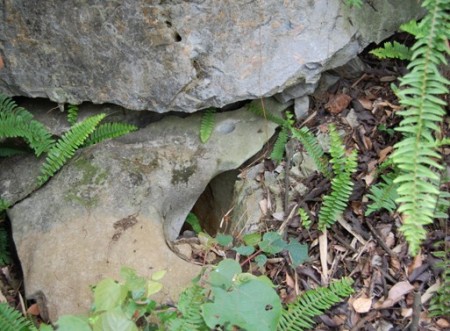
Fig.1 Suspected Ancient Cave tomb
Ⅱ. No artificial traces were found on the huge stone in the suspected artificial remains, neither the suspected structures for observation nor the suspected ancient topographic maps. The holes, grooves and cracks on the rocks should be created due to corrosion, water or other natural force(Fig.2), and the reason is similar to the formation of large caves and cracks on the exposed rocks in the nearby mountains(Fig.3). However, the size of the caves and cracks in the mountains is big enough, and not easily mislead the observers.
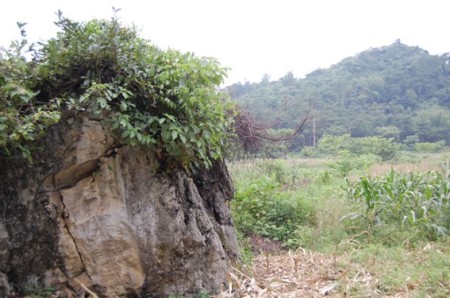
Fig.2 Huge Stone in the Suspected Astronomical Observation Site
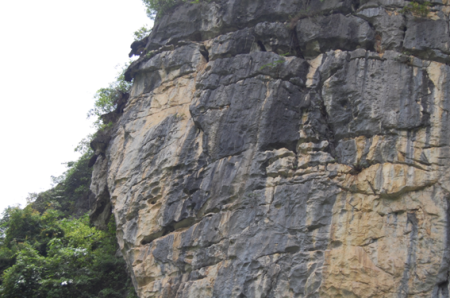
Fig.3 the Exposed Rock in the Nearby Mountain
Ⅲ. The scratches on some rocks in wheat fields were considered to be artificial traces in Dr. Gosline’s opinion. He even pointed out that some scratches were ancient writing. Based on the survey, we don’t think those scratches were artificial traces. We determine that the formation of those scratches is consistent with the above two points. To be prudent and scientific, we copied the so-called ancient engraved characters by using the silicone impression(Fig.4).

Fig.4 Copy the So-called Ancient Engraved Character by Using the Silicone Impression
Then we observed and analyzed the mould by using Scanning Election Microscopy(SEM) and the results are as follow.
1.The mould was observed under low magnification, and we found no man-made tools marks(Fig.5).

Fig.5 Scratch of Suspected Inscription, SEM20×
2. Some traces seem close to straight grooves when they are observed with the naked eyes. And, there are nearly circular pits inside the grooves. Dr. Youmin thought that the traces may be carved after drilling by using some man-made tools. But we found no regularity traces produced by drilling tools under SEM. We can be clear about that by comparing the bottom of groove(Fig.6)and the bottom of real borehole(Fig.7).

Fig.6 the Groove Bottom of Suspected Inscription, SEM400×
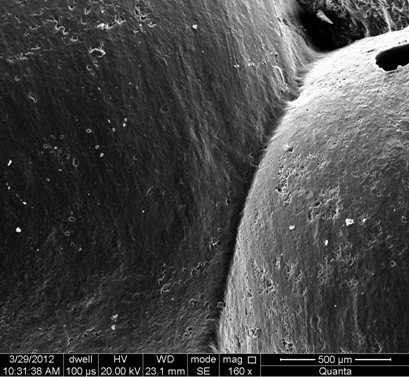
Fig.7 the Bottom of an Aperture in Bird-shaped Jades Unearthed at Erlitou Site, SEM160×
3. If the grooves were cut or carved by man-made tools, some regular traces or micro traces would be remained on the inner wall of the groove. And the traces or micro traces will be arranged in groups in the same or similar direction(Fig.8). In fact, the surface characteristics of the inner wall are exactly same with the surface characteristics of groove bottom, and they are both natural erosion surface of carbonate rock(Fig.9).
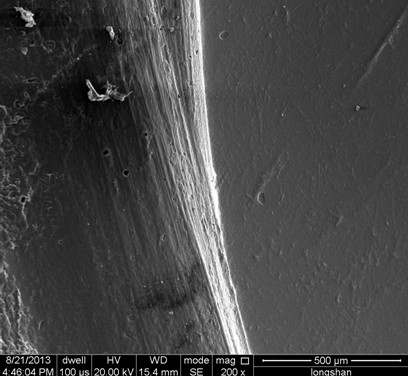
Fig.8 Man-made Groove on the Turquoise Bead Unearthed at Xizhufeng Site, SEM200×
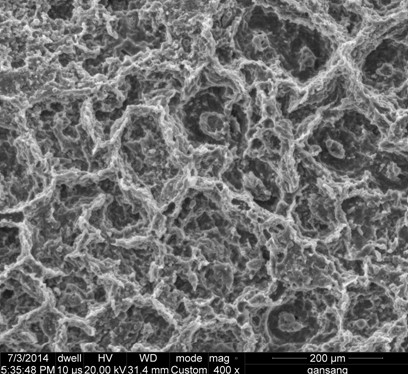
Fig.9 The Groove side of Suspected Inscription, SEM400×
In general, the suspected engraved scratches on the rocks were certainly produced by natural force. This kind of phenomenon is quite common in the Karst landform such as Gansang area.
Additionally, we observed the inscriptions stone flakes with the naked eyes so far and found some traces were very fresh, which also means that weathering degree of the inner surface of scratches is different from the surface of stone flakes. The stone flakes are mostly argillaceous shale. This kind of rock material doesn’t like nephrite or quartzite, which are hard and dense enough to be preserved steadily in a burial environment. Also it was because weathering degree of the stone flakes surface was high, we gave up making silicone impression after discussion with Pingguo museum. Nevertheless, the inscriptions stone flakes can be observed under SEM directly if necessary.

